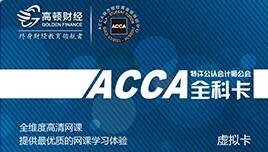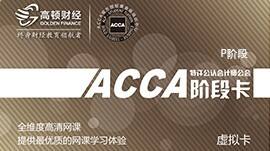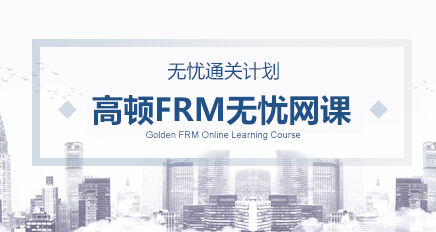2010年12月ACCA考试考官报告(P3)
General Comments
This examination paper was not quite as well answered as previous paper P3 examinations.It appears to have exposed certain areas of weakness,where perhaps candidates have elected to not learn or revise specific objectives in the Study Guide.The areas of weakness relate to
•Explaining three corporate rationales for adding value–portfolio managers,synergy managers and parental developers.This is learning objective B1e (in original Study Guide) and this was specifically examined in question 1c.
•Exploring (through Mintzberg’s organisational configurations) the design of structure,processes and relationships.This was specifically examined in question 3b.It relates directly to learning objective C1e in the original Study Guide.
Question 4b,concerned the need to establish a business case as part of project initiation (learning objective G1d),to monitor benefits (learning objective G3a) and to undertake benefits realisation (learning objective G3d) was also poorly answered.
In contrast,question 1a(on portfolio analysis) and question 4a(on costs and benefits) were answered very well.Question 2,the most popular optional question,on e-marketing was also answered very well by most candidates.Question 3a(on organisational culture) was reasonably well answered by candidates who used the cultural web(or a similar framework) in structuring their answer.Question 1b,on the context and implementation of strategic change,proved to be a difficult question for many candidates.However,those who used appropriate frameworks; such as Balogun and Hope Hailey,the cultural web,the structured turnaround process and Lewin’s unfreeze–transition–freeze approach scored reasonably well.There was a lot of material in the case study to support this part of the question.
There was little evidence of time management problems and most of the scripts were well presented and well written,although some markers again commented on poor handwriting of some scripts.Candidates must remember that what cannot be read,cannot be marked.However,the main problem appears to have been lack of knowledge of certain areas of the syllabus.
Specific Comments
Section A question
Section A consists of one compulsory question based around a case study scenario.This scenario described three companies in a portfolio of fourteen companies owned by an organisation called Shoal plc.These companies were ShoalFish(a fishing fleet),ShoalPro(a fish processing company) and ShoalFarm(a fish farming company).The first part of the question asked candidates to assess the contribution and performance of these three companies within the Shoal plc portfolio.Most candidates answered this question well,correctly interpreting the textual and financial information given in the scenario.However,surprisingly few candidates actually used portfolio analysis,despite the fact that the financial information was aligned to the data needed to classify the companies within the Boston Box.Furthermore,some candidates analysed the data as if these three companies were the only companies in the portfolio.In reality,there are eleven more companies for which data is not given.It is important to carefully read the scenario.However,overall,this was a popular and well-answered part of the question.
The second part of the question began by asking candidates to analyse the contextual factors affecting how strategic change should be managed by Shoal plc at a company (Captain Haddock) it is about to acquire (question bi).The question suggested that candidates should use an appropriate model,but no specific model was mandated.
Performance was very patchy in this part of the question.Some candidates wrote very little,others described the change process (required in bii),whilst others did identify an appropriate model (the Balogun and Hope Hailey kaleidoscope or the cultural web) but failed to us it in the context of the case study scenario.The best answers used an appropriate model and provided relevant cross-reference to the case study scenario for each facet of their selected model.
Part bii of this question asked candidates to identify and analyse the main elements of strategic change required to turnaround Captain Haddock and return it to profitability.This part of the question was reasonably well answered with some candidates being aware of an approach specifically geared to a turnaround situation.However,even those who were not familiar with this approach,were able to give a sensible answer gaining pass marks,often using Lewin’s unfreeze-transition (change)-freeze framework as an overall structure to their answer.
The final part of this question was relatively theoretical.It asked candidates to explain three corporate rationales;portfolio managers,synergy managers and parental developers and to assess their relevance to the overall corporate rationale of Shoal plc.As mentioned in the introduction,this was very poorly attempted with many candidates scoring three marks or less.This appears to have been due to a lack of knowledge in this area of the syllabus.
Section B questions
Candidates have to answer two of the three questions presented in this section of the examination.
Question Two concerned a specialist business book publisher considering investment in e-business.The first part of the question (worth 5 marks) asked candidates to determine the main drivers for the adoption of e-business and to identify potential barriers to its adoption.The case study scenario provided a wealth of information and many candidates gained full marks for this part of the question.Indeed,some answers were too long and elaborate for the marks on offer and strayed too far into the answer to the second part of the question.Candidates are reminded of the need for effective time management and the need to answer the specific requirement of the question.
The second part of the question asked candidates to evaluate how certain elements of the marketing mix (price,promotion,product,physical evidence and place) might be exploited through the adoption of e-business.Again,this was relatively well answered with many candidates giving relevant examples from their own studies,from appropriate websites (such as Amazon) and from contemporary technology,such as Kindle Readers and iPads.Candidates who marginally failed this question just did not make sufficient points to gain the marks on offer.Very few candidates who elected to answer this question were completely unaware of the marketing mix,although some did introduce the other two elements of the mix (process and people) despite these not being explicitly required in the question.
Question Three described a small electrical component importer owned and managed by a dominant,autocratic manager.Candidates were asked,for fifteen marks,to analyse this company using the cultural web or any other appropriate framework.Clearly candidates had to know the constituent parts of the cultural web (or an appropriate alternative) to successfully answer this question.Candidates who had such knowledge usually gained a pass mark on this part of the question.
The second part of question three asked candidates to explain how an understanding of organisation configuration could have helped predict the failure of the company accountant’s proposal to formalise structure,controls and processes.The question also specifically referenced Henry Mintzberg’s configuration stereotypes,in the belief that this would help candidates identify which part of the Study Guide was appropriate to this part of the question.As mentioned in the introduction,very few candidates answered this well,with perhaps less than one in ten familiar with the work of Mintzberg,despite its explicit reference in the Study Guide.However,even without this specific knowledge,candidates failed to pick up on the key words of structure,controls and processes.Candidates could have focused their answer on these,recognising that the proposals of the company accountant,based on her experience in a large tax authority,were a very poor match for the centrally controlled,flexible,informal environment of a small organisation.Taking such an approach could have gained five or six marks,which would have changed many marginal fail answers into marginal passes.Most candidates who failed this question did so because of their very poor performance in the second part of the question.
Question Four considered a professional qualifications body considering the implementation of e-assessment.The first part of the question,worth fifteen marks,asked candidates to evaluate the perceived benefits and costs of adopting e-assessment.In general,this was answered well by most candidates.Some scored very high marks,showing excellent analysis given the time constraints and pressure of the examination situation.Candidates who marginally failed this question usually did not provide sufficient discrete points to gain the marks on offer.There was often too much repetition of the “reduces costs” benefit.
The second part of this question asked candidates to explain why establishing a business case,managing benefits and undertaking benefits realisation are essential,despite the claimed ‘self-evident’ justification of adopting e-assessment.As mentioned in the introduction,this part of the question was poorly answered.Candidates failed to focus on the three elements; business case,managing benefits and benefits realisation.Even rudimentary parts of the business case,for example,the need to undertake formal investment appraisal,was rarely raised by candidates.Many candidates marginally failed this question because they did not answer the second part of the question or only offered two or three sentences that largely reflected the information given in their answer to the first part of the question.

相关阅读
2012年12月ACCA考试P4考试考官报告2013/06/19
2012年12月ACCA考试P3考试考官报告2013/06/19
2012年12月ACCA考试P2考试考官报告2013/06/19

















